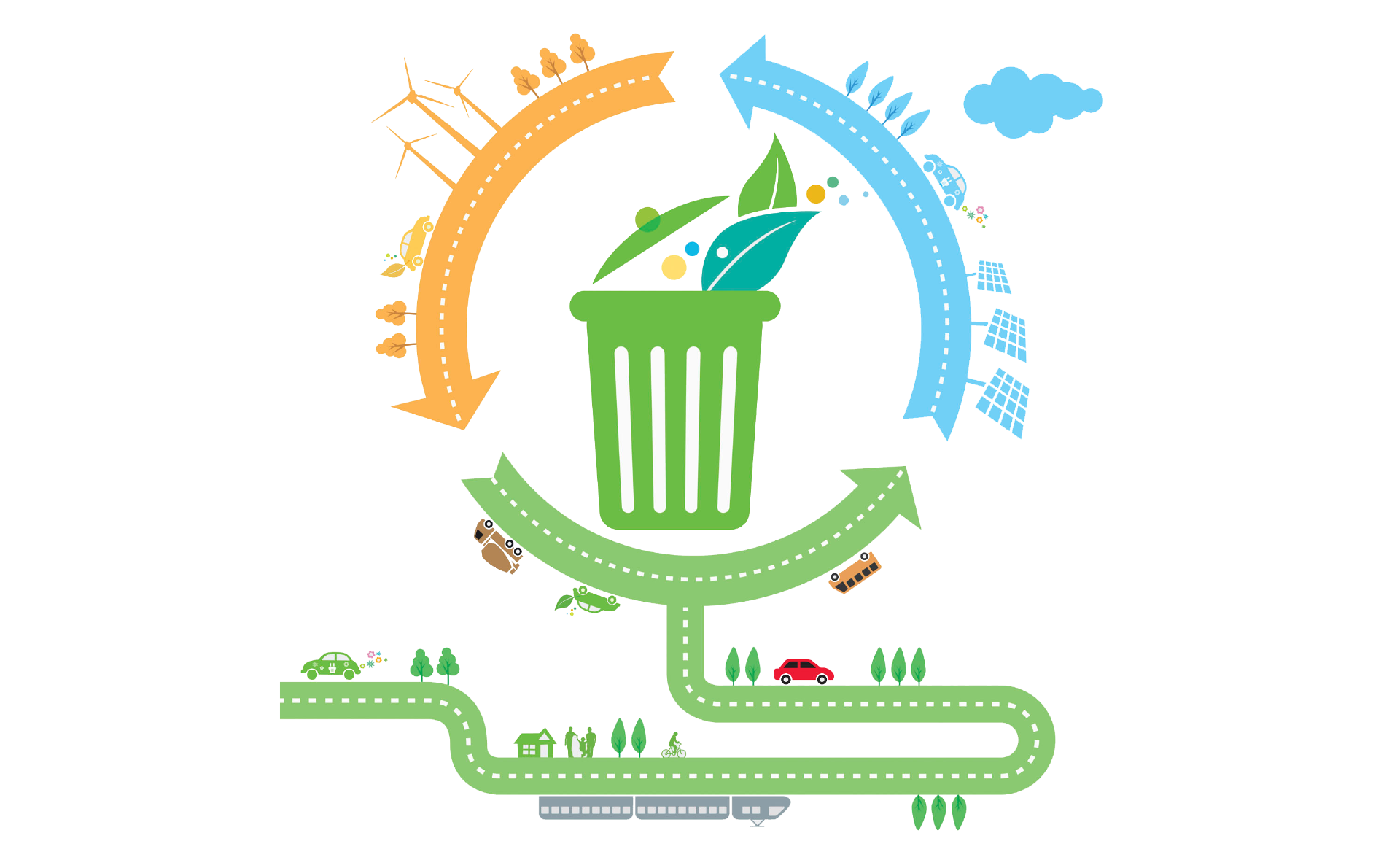Recycling: Favourable Economics Of It (Part I)
October 13, 2023 | Deep Dives

Two decades ago, it was hard to imagine that the share of renewables (including hydro) in global electricity generation could touch ~30% in 2023. The energy transition in India has been in an accelerating phase, thanks to the favourable government policies. Why has it suddenly become more important than ever? Well, COVID-19 accelerated the clean energy adoption trend and also made us realise that the shift to green energy is fuelled by necessity. In addition, the Russia-Ukraine war also highlighted the importance of a quick shift to renewables. Countries like India and Europe, which are fuel dependent on other nations, did realise the need to fill in the gaps after the energy supply disruptions for greater security after the pandemic and the war period. Hence, definitely, it’s a long-term and integral play for any economy to achieve sustainable growth. Continuing cost declines confirm that competitive renewables are a low-cost climate and decarbonisation solution that aligns with short-term economic needs while keeping long-term sustainable goals intact. The more these technologies are deployed, the more their costs could fall.
A big factor in this journey has been the optimum usage of resources, a pivotal concept in stock market commonly referred to as operating efficiency. Haven’t we observed companies emphasizing reducing waste while manufacturing, optimizing resource utilization to its fullest extent, and transitioning to raw materials that offer a higher yield. These indicators suggest that the recycling industry is poised for healthy growth, with unit economics increasingly becoming favourable. Frequently, we express the adage, "What goes around, comes around," and it is now imperative to transition from the conventional linear model of produce, use, and dispose to the circular model of reuse and recycle.
Although the recycling industry has been in existence for several years, the pace of its adoption has significantly quickened over the last 2–3 years. ESG (Environmental, Social, and Governance) compliance is not confined to this sector alone; it is now prevalent in various other industries.
Relevance of Recycling Across Industries
For example, as far back as 1993, Patagonia employed recycled polyester from plastic soda bottles to make outdoor clothing. Presently, brands and companies are increasingly embracing the concept of a "circular economy," especially when they can command premium prices for their products due to their sustainability attributes. Notably, the utilization of recycled polyester, such as PET bottle recycling, by major brands like Zara and H&M stands out as a crucial element of sustainability initiatives in the fashion industry.
At first, recycled yarn predominantly found its place in the international market. However, there is now a notable shift towards its adoption in the domestic market as well. The management of Banswara Syntex Ltd. emphasized during a recent conference call how they have augmented the incorporation of recycled polyester in their production processes. Previously, in India, recycled yarn was primarily considered viable if it demonstrated a higher level of competitiveness. Presently, other factors have gained significant prominence, leading to an increased demand for recycled yarn in the Indian market.


The green impact of this fabric goes even beyond the recycling benefits. The clothes match virgin polyester in quality, but their manufacturing takes significantly fewer resources. Its production requires almost 60 percent less energy, and CO2 emissions are reduced by nearly one-third compared to virgin polyester.
Extended Producer Responsibility (EPR) schemes, for example, have become a powerful tool for promoting effective waste management solutions in a number of countries. The objective of EPR is to push producers (including thermal power generators, renewable energy developers, and manufacturers) to factor in environmental costs as part of their project planning. For instance, a change in government regulations mandates using at least 30% recycled content in new PET bottles by 2025. The current recycled content in Coca-Cola is 9–10%, and the company plans to increase it to 50% by 2025. Sustainability and ESG compliance have now become global trends.
An equally significant illustration pertains to the importance of recycling within the steel industry. The pivotal shift of the steel industry toward a circular economy model holds profound significance in terms of optimizing resource efficiency, curtailing waste generation, and fostering sustainable practices, given its integral role in the broader economy.

Augmenting the proportion of Electric Arc Furnace (EAF)-based steel production serves as a means to reduce carbon emissions in the steel industry, offering the additional advantage of requiring lower capital investments. In the United States, the EAF's share of total steel production was 25% in 2012, but this figure surged to 70% by 2020. Similarly, in the Middle East, EAF accounts for 94.4% of production; in India, it stands at 55.5%; and in the European Union, it constitutes 42.4% of steel production.

Almost a decade ago, if someone had inquired of refractories companies whether they engaged in recycling, the response would have been an unequivocal "no." The refractories industry was commonly associated with pollution. However, over the past 5-6 years, the worldwide emphasis on pollution reduction and the scarcity of raw materials have prompted a re-evaluation of material recycling within the refractory industry. Such recycling opportunities remain quite limited, but companies able to access them can achieve substantial savings, amounting to ~30% of their total costs.
Another noteworthy sector that is fostering favorable economics is the aluminum recycling industry. Primary aluminum accounts for 65% of the total demand for aluminum, with the remaining 35% being sourced from recycled aluminum. Each ton of aluminium recycled rather than produced from ore saves:
- 24 barrels of crude oil equivalent of energy
- Over 15 tons of fresh or sea water used
- More than 9 tons of CO2 equivalent of GHG emissions
- 2.5 tons of solid waste, including recyclable solid waste
Globally, nearly 70% of aluminum cans are recycled, and in India, the recycling rate is an impressive 85%.
Another significant sector of note is lead recycling. In India, 65% of the demand for lead is met through recycled sources, with the remaining 35% relying on primary lead production. An essential aspect is that nearly 100% of primary lead can be recycled, effectively removing impurities without any deterioration in its properties. Primary lead scrap that is discarded causes huge environmental damage and pollution.

Thus, recycling these waste scraps and using it again can protect the environment. Recycled lead uses only 30–40% of the energy required to extract primary lead from its ore. An additional advantage is that lead can be repeatedly re-melted and recycled without any degradation in its properties, making recycled lead the preferred choice for most industries over primary lead.
Reclaimed rubber products are in high demand across various essential industries, including automotive, consumer goods, aerospace, and footwear. This growing demand is a direct result of a significant shift towards the preference for environmentally friendly and recyclable materials. Particularly, the automotive sector represents the largest consumer of reclaimed rubber within these industries.

The EPR policy assigns the highest level of importance to reclaimed rubber, and as a result of its introduction, the current usage of reclaimed rubber, which stands at 3-4%, is expected to increase to 7-8%. This adjustment is aimed at helping manufacturers meet recycling targets and boost the overall production of reclaimed rubber.
Examining the current utilization of sustainable materials by global players like Bridgestone and Michelin, who currently incorporate 30–40% sustainable materials and have plans to raise this to 80% by 2050, it becomes evident that there is significant growth potential for Indian industry players.
Undoubtedly, efforts are underway to enhance the structure of the recycling industry, and the potential for growth is vast. Part Two of the blog will delve deeper into specific industries within this sector, providing detailed insights into the companies that are highlighting their significant contributions and advancements in this direction.
Disclaimer:
Investment in securities market are subject to market risks. Read all the related documents carefully before investing. The content in these posts/articles is for informational and educational purposes only and should not be construed as professional financial advice and nor to be construed as an offer to buy /sell or the solicitation of an offer to buy / sell any security or financial products.
Registration granted by SEBI, membership of BASL and certification from NISM in no way guarantee performance of the intermediary or provide any assurance of returns to investors.
The securities quoted are for illustration only and are not recommendatory.
Disclaimers and Disclosures
SEBI Registration No. :INH000017338, IN/AIF3/24-25/1571, IN/AIF2/24-25/1607 | BASL Membership ID: 6276
Investment in Securities Market are subject to market risks. Read all related documents carefully before investing. The securities quoted are for illustration only and are not recommendatory. Registration granted by SEBI, membership of a SEBI recognized supervisory body (if any) and certification from NISM in no way guarantee performance of the intermediary or provide any assurance of returns to investors.


 Follow
Follow